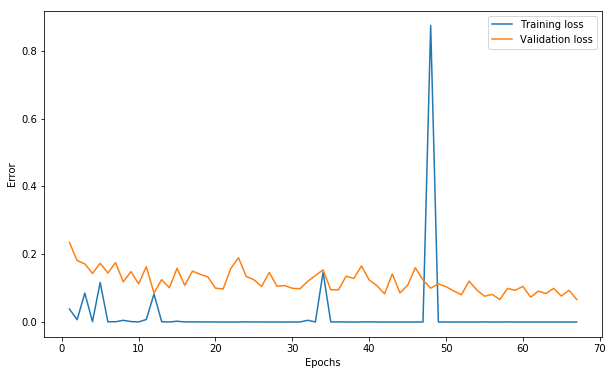This repository contains a simple, light and high accuracy model for the German Traffic Sign Recognition Benchmark (GTSRB) dataset. This model was designed and trained for the NYU's Fall 2018 Computer Vision course competition in Kaggle. All training was done using GPUs in NYU's Prince cluster.
The baseline code for training and producing predictions was obtained here and modified in this repository.
The Residual Network implemented in model48.py achieved 99.02% accuracy as a single model in the test set of GTSRB. Although not being the record score on this dataset, this model can easily be trained in under 10 minutes in a single GPU. In its first epoch, it achieves already ~93% of accuracy in the validation set generated by data48.py.
(Please note: to proceed with training, please make sure you have PyTorch properly installed)
- First download the dataset from GTSRB
- Now run the following command:
python main48_cuda.py --data='<folder-with-data-zips>' --epochs=20 --batch-size=64 --lr=0.01 --wd=0.8 --momentum=0.9
(The code will unzip the dataset for you and create train/validation/test folders)
- The code saves a checkpoint of the model after each training epoch as
model_##.pthand runs it through the validation set, where you can see the validation accuracy. Also, it saves the training and validation losses per epoch in the filelosses.p, to visualize it, run the following code:
import pickle
import matplotlib.pyplot as plt
losses = pickle.load(open('losses.p', 'rb'))
epochs = [e[0] for e in losses]
training_loss = [e[1] for e in losses]
val_loss = [e[2] for e in losses]
plt.plot(epochs, training_loss, label="Training loss")
plt.plot(epochs, val_loss, label="Validation loss")
plt.xlabel("Epochs")
plt.ylabel("Error")
plt.legend()
plt.show()Which will produce a graph like this:
- After selecting the saved checkpoint (e.g.
model_16.pth) that you want to evaluate in the test set, run the following command:
python evaluate48_cuda.py --data='<folder-with-data-zips>' --model='<chosen-model.pth>'
- This will produce the file
gtsrb_kaggle.csv, which contains the predictions of your model.
